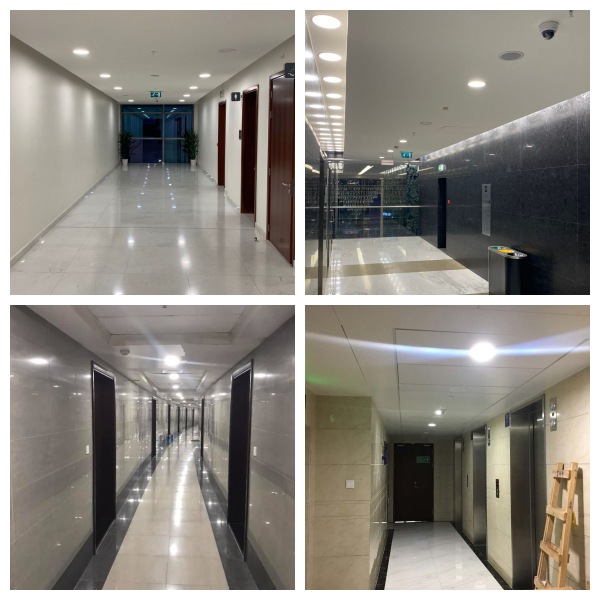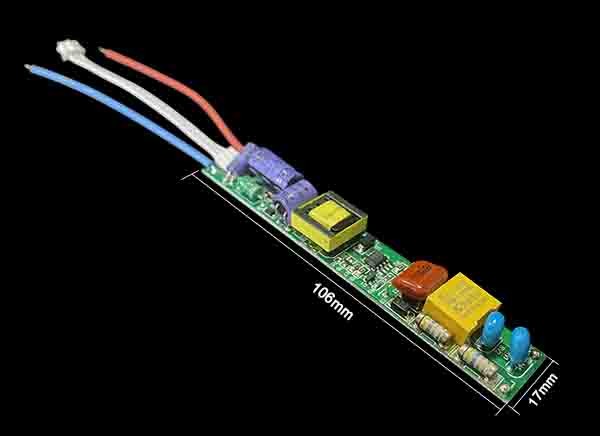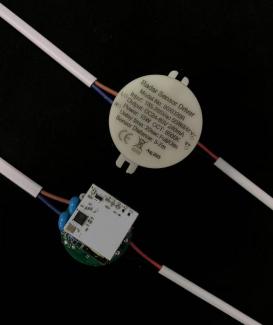8-36W Microwave Sensor LED driver for led tube linear light triproof
No need normal drivers. Just Connect to LED Light source directly.
The smart LED driver is designed for easy integration into existing lighting systems, making it suitable for both retrofitting and new installations.
8-36W Microwave Sensor LED driver for led tube linear light triproof
Microwave Sensor LED Drivers are designed to provide efficient and intelligent lighting control for various LED fixtures. These drivers incorporate advanced microwave sensor technology, enabling automatic motion detection and occupancy-based lighting control. They are suitable for a wide range of LED lighting applications, including tube lights, linear lights, garage lights, weatherproof lights, and panel lights.
Key Features:
Intelligent Motion Detection: The integrated microwave sensor detects movement with high precision, ensuring lights activate only when needed, thereby optimizing energy usage.
Occupancy-Based Lighting Control: The drivers enable automatic on/off functionality based on human presence, reducing energy wastage in unoccupied areas.
Energy Efficiency: By utilizing the latest LED driver technology and microwave sensors, the drivers contribute to energy savings and reduced operational costs.
Versatile Applications: Suitable for various LED lighting fixtures, such as tube lights, linear lights, garage lights, weatherproof lights, and panel lights, offering flexibility for different environments.
Longevity: The LED drivers ensure stable and constant power supply, extending the lifespan of LED fixtures and minimizing maintenance requirements.
Customizable Settings: Adjustable sensitivity, detection range, and time delay settings allow users to tailor the lighting control to specific needs.
Easy Installation: Designed for straightforward installation and seamless integration into existing lighting systems.
| Model no | 90F19WM | 90F6B | 90F6C/F6D | 90FKH | 90F50W | WL-18T | 90CK40P |
| Operation voltage | 85-265Vac 50/60Hz | 85-265Vac 50/60Hz | 185-265Vac 50/60Hz | 85-265Vac 50/60Hz | 185-265Vac 50/60Hz | 185-265Vac 50/60Hz | 85-265Vac 50/60Hz |
| Output Power | 8-18W | 8-18W | 8-18W | 5-23W | 30-50W | 5-24W | 18-36W |
| Ouput voltage | DC58-78V | DC58-78V | DC58-80V | DC60-80V | DC100-165V | DC58-78V | DC57-76V |
| Output current | 100-220mA | 100-220mA | 100-230mA | 270mA | 270mA | 200-300mA | 450mA |
| Power factor | 0.9 | 0.9 | 0.5 | 0.9 | 0.5 | 0.5 | 0.9 |
| HF system | 3.3GHz | 3.3GHz | 3.3GHz | 3.3GHz | 3.3GHz | 3.3GHz | 3.3GHz |
| Transmitting power | <0.5mW | <0.5mW | <0.5mW | <0.5mW | <0.5mW | <0.5mW | <0.5mW |
Control Light source type | On/Off | On/Standby | On/Off On/Standby | On/Standby On/Off | On/Standby | On/Standby On/Off On-standby-Off | On/Standby |
| Detection range | 6-8m | 6-8m | 6-8m | 6-8m | 6-8m | 6-8m | 6-8m |
| Detection angle | 140 degree | 140 degree | 140 degree | 140 degree | 140 degree | 140 degree | 140 degree |
| Hold time (Default) | 15-20s | 15-20s | 15-20s | 15-20s | 15-20s | 15-20s | 15-20s |
| IP rating | IP20 | IP20 | IP20 | IP20 | IP20 | IP20 | IP20 |
| Light source type | The radar motion sensor drivers are ideal for retrofit LED Panel light, LED Downlight, LED Ceiling light, LED Batten, LED Triproof light. LED Surface downlight etc. | ||||||
| Size(mm) | 106*17*12 | 78*17*12 | 57*15*12 | 160*17*10 | 117*15*10 | 92*18*12 | 78*30*15 |
| Application type | With motion sensor Corridor, staircase, lobby, balcony, hallway, | ||||||
| MOQ | 100pcs | ||||||
| Lead time | 1000pcs: 7 days 5000pcs: 15-20 days (depending on required specification) | ||||||
Application type:
LED Batten, LED Downlight, LED Linear light, LED ceiling light.


Here is short video showing how to connect the sensor driver with your light source and it works?
FAQ:
1. What are the advantages of using a microwave radar sensor LED driver?
Microwave radar sensors have a wider coverage area compared to traditional infrared sensors, making them suitable for large spaces.
They can penetrate obstacles like glass and plastic, allowing concealed installation.
Radar sensors are less affected by environmental factors like temperature and humidity.
LED drivers with radar sensors can provide intelligent lighting control, saving energy and increasing efficiency.
2. How does the microwave radar sensor work?
The microwave radar sensor emits microwave signals and measures the time it takes for these signals to bounce back after hitting an object. By analyzing the frequency shift of the returned signals, the sensor can determine the distance, direction, and speed of moving objects. When it detects movement within its range, it sends a signal to the LED driver to turn on or adjust the LED lights accordingly.
3. What are some common applications of microwave radar sensor LED drivers?
LED lighting systems in parking lots and garages to save energy by adjusting light levels based on vehicle and pedestrian movement.
Security lighting for buildings and outdoor areas that activate when motion is detected.
Public restrooms and other spaces where automatic lighting control can improve user experience and energy efficiency.
Industrial settings to optimize lighting usage in warehouses and manufacturing facilities based on occupancy.
4. Can the microwave radar sensor be affected by weather conditions?
Generally, microwave radar sensors are less affected by weather conditions such as rain, snow, or fog compared to passive infrared (PIR) sensors. However, extremely severe weather conditions may have some impact on their performance.
5. Can the microwave radar sensor detect through walls?
Microwave signals can penetrate certain materials like glass and plastic but may have difficulties passing through thick walls or metal barriers. The sensor's detection capabilities will depend on the material and thickness of the obstacle.











 Selina-Allmay Motion Sensor Light Specialist
Selina-Allmay Motion Sensor Light Specialist